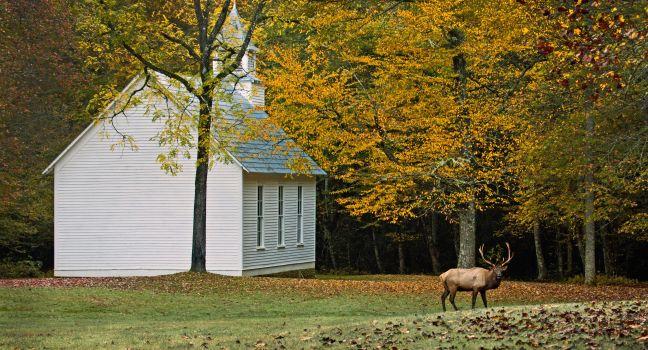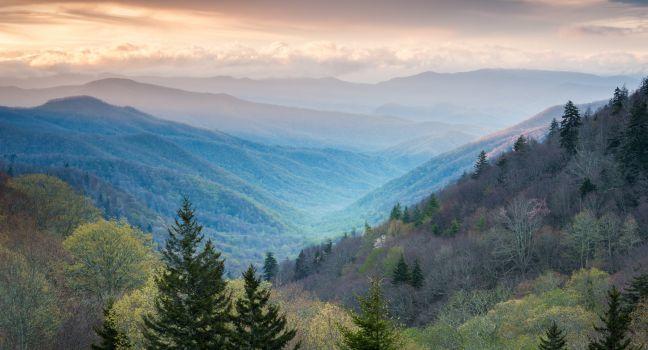This is perhaps the best re-creation anywhere of an Appalachian mountain farmstead. The nine farm buildings, all dating from the late 19th century, were moved in the 1950s to this site next to the Oconaluftee Visitor Center from various locations within the park. Besides a furnished two-story chestnut log cabin, there is a barn, apple house, corncrib, smokehouse, bee gums, springhouse, chicken coop, and other outbuildings. In season, corn, tomatoes, pole beans, squash, and other mountain crops are grown in the garden, and the park staff sometimes puts on demonstrations of pioneer activities, such as making apple butter and molasses. Two easy 1½-mile walking trails begin near the museum. Dogs on leashes are allowed on the trail but not within the farm grounds. Elk are sometimes seen grazing in the pastures adjoining the farm, and occasionally you may see white-tailed deer and wild turkeys. This is an extremely popular place to visit, but in the evening after the visitor center closes, you're likely to have it to yourself.







